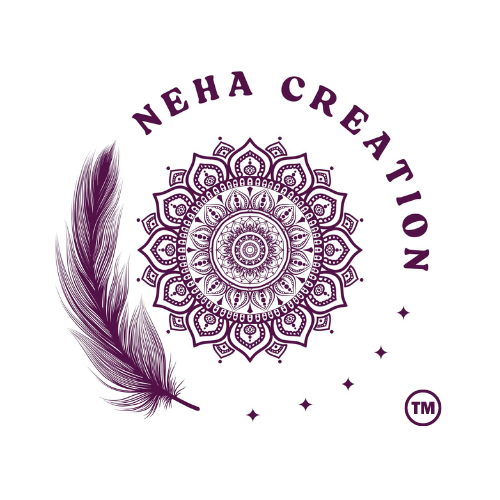Introduction
In the fast-paced corporate world, problem-solving is a crucial skill that defines successful businesses and effective leaders. However, traditional methods of tackling workplace challenges—such as brainstorming sessions and analytical models—often fail to inspire innovative thinking. Enter Mandala Art, a unique and powerful tool that fosters creativity, focus, and structured problem-solving.
By integrating the Mandala experience into workplace problem-solving, employees and leaders can approach challenges with a fresh perspective, enhanced concentration, and a deeper sense of clarity. In this blog, we explore how Mandala Art can be leveraged as a problem-solving technique in corporate settings and why it is gaining popularity as a mindful and structured approach to overcoming business hurdles.
Understanding the Mandala Experience in Problem-Solving
A Mandala, derived from the Sanskrit word for "circle," is a geometric design representing balance, unity, and interconnectedness. Traditionally used in meditation and spiritual practices, Mandalas promote mental clarity, self-reflection, and stress relief. These same qualities can be applied to solving workplace problems.
Key benefits of Mandala Art in problem-solving:
- Encourages structured thinking while allowing creative flexibility
- Enhances focus and concentration, reducing workplace distractions
- Promotes mindfulness, leading to better decision-making
- Encourages collaboration and team synergy
- Reduces stress and anxiety, improving cognitive function and emotional intelligence
By translating these principles into a workplace setting, leaders and teams can use the Mandala approach to tackle challenges methodically while fostering creativity.
How to Use Mandala Art for Workplace Problem-Solving
1. Define the Problem Through a Mandala Structure
In Mandala Art, the central point is the core idea or focus, while surrounding layers represent interconnected elements. Applying this to problem-solving:
- Place the problem statement at the center of the Mandala.
- Surround it with elements influencing the issue—such as stakeholders, resources, challenges, and potential opportunities.
- This visual mapping technique provides a clear structure, helping teams understand complex issues holistically.
2. Use Symbolism to Explore Different Perspectives
Mandala Art involves intricate patterns and layers, symbolizing different viewpoints and connections. Similarly, businesses can visualize a problem from multiple angles:
- Assign different sections of the Mandala to various stakeholders or departments.
- Encourage employees to express their ideas, solutions, and concerns through artistic elements.
- This exercise fosters open communication and diverse thinking, leading to well-rounded solutions.
3. Foster Mindfulness for Clear Decision-Making
One of the biggest obstacles to effective problem-solving is stress and cognitive overload. Creating a Mandala requires deep focus and patience, which naturally fosters a state of mindfulness. When employees engage in Mandala drawing:
- They become more present and reduce reactionary thinking.
- They learn to approach challenges with patience and clarity.
- It promotes calmness, reducing workplace anxiety and tension.
By integrating Mandala mindfulness sessions, businesses can create a relaxed and innovative problem-solving environment.
4. Encourage Team Collaboration Through Group Mandalas
Teamwork is essential for resolving workplace challenges, and collaborative Mandala creation is a great way to enhance synergy.
- Assign sections of a Mandala to different team members.
- Encourage each person to contribute their insights, ideas, or proposed solutions within the Mandala framework.
- This promotes unity, inclusivity, and respect for diverse viewpoints.
- The final artwork symbolizes a cohesive, collective resolution strategy.
5. Apply the Iterative Mandala Approach to Problem-Solving
Mandala creation is an iterative process—each layer builds upon the previous one. Similarly, problem-solving should be an evolving process:
- Start with initial ideas and rough solutions.
- Expand, refine, and adjust strategies based on new insights.
- Allow for flexibility and continuous feedback loops, just as Mandala Art evolves through progressive layering.
This iterative and layered approach prevents rushed decisions and ensures comprehensive, well-thought-out solutions.
Real-World Applications of Mandala Problem-Solving at Work
Many businesses are embracing creative problem-solving techniques, and Mandala-based workshops are emerging as an innovative corporate tool. Here’s how different workplace scenarios can benefit:
✔ Leadership & Strategy Planning
- Senior executives use Mandala vision boards to map out company goals and challenges.
- Helps visualize business strategies and long-term objectives clearly.
✔ Conflict Resolution & Mediation
- Employees create collaborative Mandalas to express grievances and possible resolutions.
- Fosters a non-judgmental approach to conflict resolution.
✔ Team Brainstorming & Innovation
- Creative departments use Mandala techniques to generate and organize new ideas.
- Promotes out-of-the-box thinking and artistic problem-solving.
✔ Workplace Stress Management
- HR introduces Mandala therapy sessions to help employees manage stress and enhance focus.
- Leads to improved mental clarity and overall productivity.
Implementing Mandala Art in Your Workplace
Want to integrate Mandala problem-solving techniques into your corporate culture? Here’s how:
🔹 Mandala Workshops & Training – Conduct interactive sessions on creative problem-solving using Mandalas. 🔹 Mandala Vision Boards – Use Mandalas for strategic planning, goal-setting, and innovation mapping. 🔹 Daily Mindfulness Sessions – Encourage employees to practice Mandala drawing for focus and stress relief. 🔹 Team Building Through Art – Use group Mandala projects to enhance collaboration and team bonding.
Conclusion
The Mandala experience offers a refreshing, structured, and creative approach to problem-solving at work. By integrating Mandala techniques into corporate problem-solving, businesses can foster mindful leadership, innovative thinking, and collaborative teamwork.
As organizations navigate today’s complex work environment, embracing Mandala Art as a problem-solving strategy can lead to better decision-making, reduced stress, and a more resilient workforce.
Are you ready to transform your workplace problem-solving approach with Mandala Art? Explore the possibilities and discover how this ancient art form can unlock modern business success. 🌟



